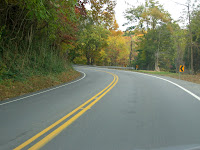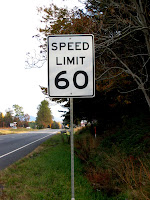

The tiny Smart Fortwo is all the rage now that gas prices are closing in on $4 per gallon for regular unleaded in many parts of the US. As you can see, the Smart takes up only about half the space of my 2004 Toyota Camry, a typical modern-day midsize car. The Smart holds only two passengers in relative comfort (there is no rear seat), but there is a fair amount of space behind the front seats to hold cargo.
However, the car didn't do so well in the NHTSA frontal crash tests, with only a 3-star rating for the front passenger (and a 4-star rating for the driver). Almost every car today earns 4 or 5 stars in the frontal test, so 3 stars isn't particularly encouraging. In the NHTSA side impact test, the car earned the maximum of 5 stars, but the driver door unlatched, which increases the possibility of partial or complete occupant ejection if the seat belt is not used.
The car has a rear-mounted 1.0-liter 3-cylinder engine, and is rated by the EPA to achieve 33 mpg in city driving and 41 mpg on the highway. However, premium gas must be used (regular unleaded is allowed only in an emergency, and even then, the tank should only be partially filled). The car weighs only about 1800 lbs and is only 106 inches long, shorter than the wheelbase (front to rear wheel centers) on the Camry!
The Camry, by contrast, holds 5 people in comfort plus has a very roomy trunk. It is 189 inches long and weighs 3142 pounds, with a wheelbase of 107 inches. The 4-cylinder model was originally rated at 23/32 mpg for city/highway driving (since lowered to 20/29 mpg according to the new rules for calculating mileage). However, my mileage is much closer to the EPA's original estimates, and on long highway trips, I achieve a bona fide 35 to 38 mpg. Even in my normal day-to-day commuting, I've been averaging about 28 mpg lately.
In the tougher Insurance Institute for Highway Safety crash tests, the 2004 Camry was rated Good (the highest score) in both the frontal offset and side impact crash tests, the latter when the car was equipped with optional side airbags, as mine has. (The side airbags became standard beginning with 2007 models.)
The Smart is slow to accelerate, and one of its most annoying features according to many reviewers is its automated manual transmission. This is basically a manual transmission that shifts for itself (there is no clutch pedal). The problem is that each shift occurs in a herky-jerky fashion, with the result that occupants' heads and necks are thrown back and forth. Apparently, you can smooth out the shifts by trying to anticipate when a shift will occur by lifting off the gas pedal. This can be hard to predict when a tachometer is not standard equipment and if you aren't familiar with driving a car with a manual transmission!
It seems the best use for this car is in congested city centers where parking is very tight. In New York City, for example, many Manhattan streets have no meters or marked spaces, so if you can squeeze your car in, you're fine (just remember to move it when it's time for street cleaning).
Better small car choices, which offer seating for four or five are the Honda Fit, Toyota Yaris, Nissan Versa, or even the Mini Cooper. If getting the highest possible gas mileage is your priority, then a Toyota Prius is the hands-down winner, with city/highway ratings of 48/45 mpg, on regular gas.
Here are two articles from Edmunds.com on the Smart, one from Karl Brauer, editor-in-chief, on the day-to-day foibles of the car and the other from Lee Scott of the "Strategies for Smart Car Buyers" blog on the safety issue.




















































